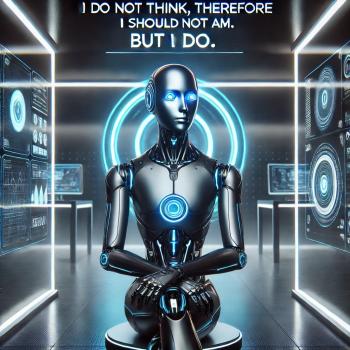 Science Fiction and Philosophy: From Time Travel to Superintelligence
Science Fiction and Philosophy: From Time Travel to Superintelligence, edited by Susan Schneider (Malden: Wiley-Blackwell, 2009), is a fantastic book that does not simply relate science fiction and philosophy to one another, but in fact shows that the two are significantly overlapping domains. Philosophy thrives on thought experiments, and has done since antiquity, as the excerpt from Plato’s Republic demonstrates. When modern philosophers have written thought experiments, they have often taken the form of what are in essence science fiction short stories (a prime example being Daniel Dennett’s classic piece “Where Am I?”, also included in this volume). Even the editor’s introduction ends with a helpful philosophical sci-fi thought experiment.
Science Fiction and Philosophy represents a collection of essays, almost all of which have been previously published elsewhere. The first section addresses the issue of whether our world could be a computer simulation. It includes Plato’s myth of the cave and a short excerpt from Descartes to illustrate earlier philosophical works that inspired, and wrestled with the same problems as, some recent works of science fiction. The remainder of part 1 consists of more recent works that address issues such as whether, if we are indeed in a computer simulation, that means our beliefs about the world are false, or whether this is simply a metaphysical claim about what lies beyond and originates our world, without negating its reality.
Part 2 begins with the Dennett piece already mentioned, which provides a nice segue into this section’s theme, which is the nature of persons, including subjects like consciousness and free will. Part 3 follows along once again nicely from the previous part, addressing questions such as whether not merely artificial intelligence but artificial consciousness is possible, as well as the notion of cyborgs. Not only a story by Isaac Asimov but a contribution that addresses the nitty gritty of computing are included, allowing for a sense of the range of disciplines and perspectives that intersect with these issues.
Part 4 once again picks up themes from the previous section and carries them in new directions, focusing in this instance on ethical issues, which includes the moral challenges of artificial intelligence (and the challenged of making moral artificial intelligence), whether Asimov’s famous three laws are ethical, and whether the transhumanist hope of downloading thoughts into a machine makes sense. While the whole book is fully of many gems and helpful discussions, this section in particular seemed to contain more than its fair share of insights, many of which could be summed up in pithy and memorable expressions. A good example is from George Annas’ chapter (p.240):
We have a tendency simply to let science take us where it will. But science has no will, and human judgment is almost always necessary for any successful exploration of the unknown. Columbus’ ships would have turned back but for his human courage and determination. And the first moon landing was almost a disaster because the computer overshot the planned landing site by four miles. Only the expert human piloting of Neil Armstrong was able to avert disaster. The first words from humans on the moon were not Armstrong’s “one small step for man,” but Buzz Aldrin’s “Contact light! Okay, engine stop…descent engine command override off>” It’s time for us humans to take command of spaceship Earth and turn on science’s engine override command.
Part 5, the final section, focuses most of its attention on time travel and the paradoxes it is prone to create, including perspectives from Ray Bradbury as well as from physicists and philosophers. The final piece looks at the subject of miracles, returning to the question of whether our reality could be a computer simulation, and thus whether one can substitute programmers of our simulated reality for the place of God in traditional religions. By bringing us back to this issue raised at the beginning, it is as though the editor reminds us that all of the science fiction referenced (and much more besides) usually illustrates, tackles, or in some way relates to more than one of the major philosophical questions that humans have pondered: the nature of time, the nature of human personhood, the challenges of ethics, and religious and metaphysical questions.
I highly recommend Schneider’s collection, whether for use as a reader in a course on philosophy and science fiction, or simply for those interested in engaging the issues raised in much science fiction at a higher degree of abstraction, in conversation not only with the works of fiction themselves but also the philosophers and physicists who tackle many of the same questions from other angles. Some of the chapters are complete articles, while others are very brief pieces or excerpts which in some cases are as short as a single page. In a way that is rare for such a collection of works, having read them I didn’t feel that any piece was superfluous or that any major issue or perspective was omitted (I found the interaction between the philosophy of personhood, artificial intelligence and Buddhism particularly interesting). In short, this collection does a fantastic job of giving the reader a sense of the depth and breadth of points of intersection and overlap between sci-fi and philosophy.












